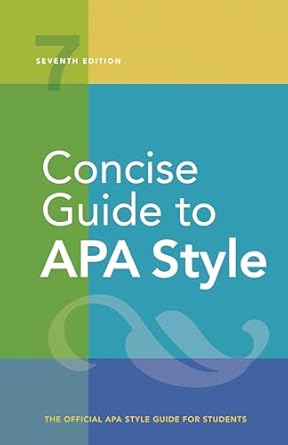[toc]
apa headings a guide to perfect formatting
Concise Guide to APA Style: 7th Edition (OFFICIAL)
Page 47 Review
APA Style Headings: A Comprehensive Guide
This analysis delves into the intricacies of APA Style headings, drawing heavily from the official guidelines to provide a clear understanding of their structure and usage.
Proper heading structure is crucial for maintaining clarity and organization in academic writing.
Avoiding Lone Subsection Headings
One of the key principles highlighted is the avoidance of single subsection headings within a section.
The text explicitly states: “Avoid having only one subsection heading within a section, just like in an outline; use at least two subsection headings within a section, or use none.” This rule is analogous to the structure of an outline, where a main point (represented by a Roman numeral) should ideally be supported by at least two sub-points (A and B), or none at all.
The goal is to ensure a balanced and logical flow of information.
The example provided, “in an outline, a section numbered with a Roman numeral would be divided into either a minimum of A and B subsections or no subsections; an A subsection could not stand alone,” further clarifies this point.
This principle ensures that subtopics are sufficiently developed and not presented as isolated ideas.
Heading Levels in APA Style
APA Style defines a hierarchy of five heading levels to organize content effectively.
According to the text: “APA Style headings have five possible levels: Level 1 headings are used for top-level or main sections, Level 2 headings are subsections of Level 1, and so on (see Table 1.3).” This hierarchical structure allows readers to easily navigate the document and understand the relationship between different sections.
The principle of top-down progression is also emphasized: “Regardless of the number of levels of subheading within a section, the heading structure for all sections follows the same top-down progression.
Each section starts with the highest level of heading, even if one section has fewer levels of subheading than another section.” This consistency ensures that the document maintains a uniform structure throughout.
The example provided demonstrates how different sections can have varying levels of subheadings. “For example, in a psychology paper with Level 1 Method, Results, and Discussion headings, the Method and Results sections may each have two levels of subheading (Levels 2 and 3), and the Discussion section may have only one level of subheading (Level 2).” This flexibility allows authors to adapt the heading structure to the specific needs of each section while maintaining overall consistency.
Headings in the Introduction
The introduction section has specific heading guidelines.
The text states: “Do not begin a paper with an “Introduction” heading; because the first paragraphs of a paper are understood to be introductory, the paper title at the top of the first page of text acts as a de facto Level 1 heading (see Figure 1.3).” This convention avoids redundancy and allows the paper to flow smoothly from the title directly into the introductory content.
For subsections within the introduction, Level 2 headings are recommended. “For subsections within the introduction, use Level 2 headings for the first level of…” This helps break down the introductory material into manageable segments, guiding the reader through the initial context and background information.
Example: Introduction Section Headings
The provided figure illustrates the proper use of headings within an introduction.
The paper title, “Risk Factors for the Development of Major Depression,” serves as the Level 1 heading.
The introductory paragraphs follow directly, without an “Introduction” heading.
Level 2 headings, such as “Genetic Factors” and “Environmental Factors,” are used to delineate the subsections within the introduction.
This example demonstrates how to effectively structure an introduction using APA Style headings, creating a clear and organized presentation of the initial content.
The specific section headings given are, “Genetic Factors
Ahistory of major depression in the family increases the risk for a person to develop depression (Gomez & Yates, 2014). [paragraph continues] Environmental Factors
Environmental stressors such as the death of a loved one also contribute to the likelihood that a person will develop depression (Pearlman, 2017). [paragraph continues]”
In conclusion, adhering to APA Style heading guidelines is essential for producing clear, organized, and professional academic writing.
By following the rules regarding subsection headings, heading levels, and the specific conventions for the introduction, authors can ensure that their work is easily navigable and effectively communicates its message.
Buy full ebook for only $18: https://www.lulu.com/shop/american-psychological-association/concise-guide-to-apa-style-7th-edition-official/ebook/product-rmzpq54.html?page=1&pageSize=4
Apa Headings A Guide To Perfect Formatting
Read more: Citation Rules: A Comprehensive Guide


Leave a Reply